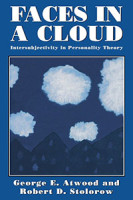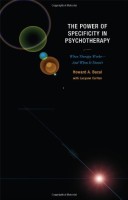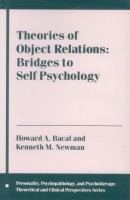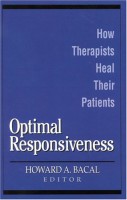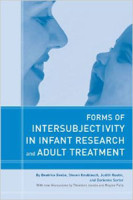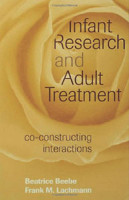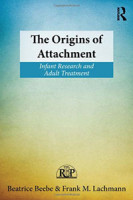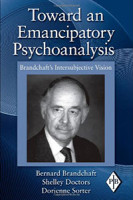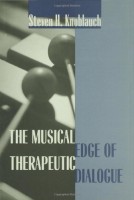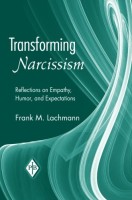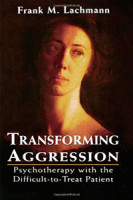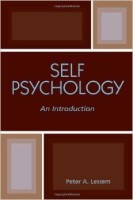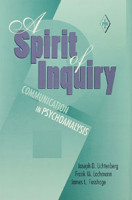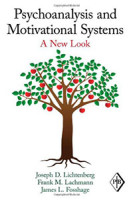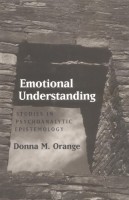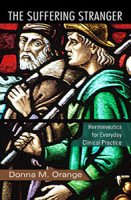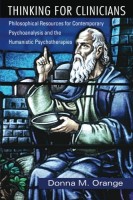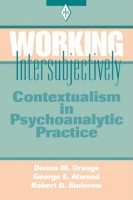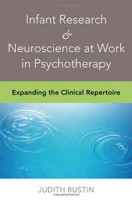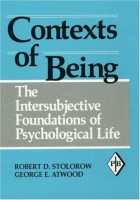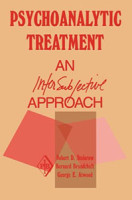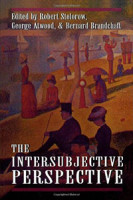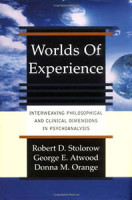The Abyss of Madness
George E. Atwood (Author)
Despite the many ways in which the so-called psychoses can become manifest, they are ultimately human events arising out of human contexts. As such, they can be understood in an intersubjective manner, removing the stigmatizing boundary between madness and sanity. Utilizing the post-Cartesian psychoanalytic approach of phenomenological contextualism, as well as almost 50 years of clinical experience, George Atwood presents detailed case studies depicting individuals in crisis and the successes and failures that occurred in their treatment. Topics range from depression to schizophrenia, bipolar disorder to dreams, dissociative states to suicidality. Throughout is an emphasis on the underlying essence of humanity demonstrated in even the most extreme cases of psychological and emotional disturbance, and both the surprising highs and tragic lows of the search for the inner truth of a life – that of the analyst as well as the patient.
Faces in a Cloud: Intersubjectivity in Personality Theory
George E. Atwood (Author), Robert D. Stolorow (Author)
In my judgment, the authors have made a strong case for the proposition that the structure of a theorist’s metapsychology will duplicate the structure of his subjective world, laid down mainly by the critical formative events of his life. It is a praiseworthy accomplishment. They have done much to clear the air of metapsychological clouds. They have shown new possibilities for psychoanalysis as a strictly clinical theory. All of these steps bring psychoanalytic thought closer to its observational base, closer also to the humanitarian impulse that underlies the helping professions. (Robert W. White, Ph.D. The Psychoanalytic Review)
Faces in a Cloud shows more clearly than anything else I have read the futility of the factionalism that pervades the field of psychoanalysis and psychotherapy. (Michael F. Basch, M.D. The Psychoanalytic Review)
This is an important work, both for the psychology of personality and for psychoanalytic theory. The authors establish a broad, ‘decentered’ perspective . . . whose purpose is to integrate various theories of personality by acknowledging their inevitable subjectivity, and then using that subjectivity to demarcate the limits of each theory. They provide fascinating psychobiographical case studies of Freud, Jung, Reich, and Rank, in which they demonstrate the relation between the internal world of each author and the major preoccupations and motivational principles of each theory. They convincingly argue that the broad metapsychological abstractions in each theory are defensive or reparative reifications of the internal psychodynamics of each theorist. This book raises important issues and questions for readers at all levels. (Stephen A. Mitchell, Ph.D. Library Journal)
The Power of Specificity in Psychotherapy: When Therapy Works and When It Doesn’t
Howard A. Bacal (Author), Lucyann Carlton (Author)
In The Power of Specificity in Psychotherapy: When Therapy Works—And When It Doesn’t Howard Bacal presents specificity theory, a contemporary process theory of psychotherapy that holds that therapy happens at the fit between the patient’s particular therapeutic needs and the therapist’s capacity to respond to them, both of which will emerge and change within the unique process of each particular dyad. Specificity theory challenges the traditional method and epistemology of psychoanalysis, wherein the understanding of the patient and the therapeutic response are apprehended through rules and prescriptions that are generated through the application of structure theories. The therapeutic engagement must necessarily and continually be monitored and adjusted to fit the specific and changing needs, capacities, and limitations of both participants, regardless of the therapist’s formal working theories. Grounded in the innovative thinking of Sandor Ferenczi and drawing as well from the creative work of Michael Balint, Wilfred Bion, Donald Winnicott, Marion Milner, and Heinz Kohut, the perspectives of specificity theory are corroborated by cutting-edge findings in contemporary neurobiology and infant research. The Power of Specificity in Psychotherapy challenges psychotherapists to reconsider how treatment is optimally practiced.
Theories of Object Relations: Bridges to Self Psychology
Howard A. Bacal (Author), Kenneth M. Newman (Author)
Theories of Object Relations: Bridges to Self Psychology discusses the work of the major American and British contributors to object relations theory, focusing on the ways in which these theories anticipated and enriched the emerging field of self psychology. Howard Bacal and Kenneth Newman significantly advance the integration of major theoretical paradigms and introduce new concepts that provide fresh perspectives on the clinical situation. The authors provide systematic and scholarly synopses of the work of Harry Stack Sullivan, Otto Kernberg, Margaret Mahler, Heinz Kohut and his colleagues, Ian Suttie, Melanie Klein, Michael Balint, W.R.D. Fairbairn, Harry Guntrip, D.W. Winnicott, and John Bowlby. The authors’ aim is to make a significant contribution to the integration of therapeutically useful ideas while at the same time pointing out the utility of the distinctive approaches.
Bacal and Newman help practitioners to organize and clarify their understanding of patients as they apply object relations theory in a variety of settings to their clinical work.
(Michael Franz Basch, Rush Medical College)
Optimal Responsiveness: How Therapists Heal Their Patients
Howard A. Bacal (Author)
A new generation of dynamic therapists is taking a fresh look at what actually heals the patient. In contrast to the classical vision, whose essential feature is intervention by interpretation in an ambience of optimal frustration, Bacal’s conception of optimal responsiveness legitimizes a whole repertoire of professional behaviors—empathic attunement, confrontation, support, self-disclosure, validation or invalidation.
Everything the therapist does or does not do, does or does not say, is experienced by the patient as some kind of response. Because the relational dynamic is unique to each therapist—patient dyad, the therapist’s responses can be tailored to meet the patient’s needs, enhancing specificity. And because optimal responsiveness implies recognition of the therapeutic process as a reciprocal system, it also implies reconstrual of what we know as countertransference.
Forms of Intersubjectivity in Infant Research and Adult Treatment Paperback
by Beatrice Beebe (Author) , Steven Knoblauch (Author) , Judith Rustin (Author) , Dorienne Sorter (Author)
Adult psychoanalysis has approached the study of intersubjectivity by concentrating primarily on the verbal dialogue, an explicit mode of communication. Infant research, on the other hand, focuses on nonverbal communication and implicit modes of action sequences, operating largely out of awareness, such as interactions of gaze, facial expression, and body rhythms. This book proposes that an integration of these two approaches is essential to a deeper understanding of the therapeutic action.
The authors use a dyadic systems model of self- and interactive regulation as a lens for comparing diverse theories of intersubjectivity, both in adults and infants. Building on the definition of intersubjectivity in infancy as correspondence and matching of expressions, the authors offer an expanded view of the presymbolic origins of intersubjectivity. They address the place of interactive regulation, problems with the concept of matching, the roles of self-regulation and of difference, and the balance of self- and interactive regulation. An adult treatment of early trauma is described through detailed clinical case material illustrating both the verbal narrative and the implicit “action dialogue” operating largely outside of awareness.
This book includes new discussions by Theodore Jacobs, arguing that nonverbal communication is vitally important to psychoanalysis, and by Regina Pally, arguing that aspects of this book have parallels in neuroscience.
Infant Research and Adult Treatment: Co-constructing Interactions
Beatrice Beebe (Author), Frank M. Lachmann (Author)
Infant Research and Adult Treatment is the first synoptic rendering of Beatrice Beebe’s and Frank Lachmann’s impressive body of work. Therapists unfamiliar with current research findings will find here a comprehensive and up-to-date overview of infant competencies. These competencies give rise to presymbolic representations that are best understood from the standpoint of a systems view of interaction. It is through this conceptual window that the underpinnings of the psychoanalytic situation, especially the ways in which both patient and therapist find and use strategies for preserving and transforming self-organization in a dialogic context, emerge with new clarity.
They not only show how their understanding of treatment has evolved, but illustrate this process through detailed descriptions of clinical work with long-term patients. Throughout, they demonstrate how participation in the dyadic interaction reorganizes intrapsychic and relational processes in analyst and patient alike, and in ways both consonant with, and different from, what is observed in adult-infant interactions. Of special note is their creative formulation of the principles of ongoing regulation; disruption and repair; and heightened affective moments. These principles, which describe crucial facets of the basic patterning of self-organization and its transformation in early life, provide clinical leverage for initiating and sustaining a therapeutic process with difficult to reach patients.
This book provides a bridge from the phenomenology of self psychological, relational, and intersubjective approaches to a systems theoretical understanding that is consistent with recent developments in psychoanalytic therapy and amenable to further clinical investigation. Both as reference work and teaching tool, as research-grounded theorizing and clinically relevant synthesis, Infant Research and Adult Treatment is destined to be a permanent addition to every thoughtful clinician’s bookshelf.
The Origins of Attachment: Infant Research and Adult Treatment
Beatrice Beebe (Author), Frank M. Lachmann (Author)
The Origins of Attachment: Infant Research and Adult Treatment addresses the origins of attachment in mother-infant face-to-face communication. New patterns of relational disturbance in infancy are described. These aspects of communication are out of conscious awareness. They provide clinicians with new ways of thinking about infancy, and about nonverbal communication in adult treatment.
Utilizing an extraordinarily detailed microanalysis of videotaped mother-infant interactions at 4 months, Beatrice Beebe, Frank Lachmann, and their research collaborators provide a more fine-grained and precise description of the process of attachment transmission. Second-by-second microanalysis operates like a social microscope and reveals more than can be grasped with the naked eye.
The book explores how, alongside linguistic content, the bodily aspect of communication is an essential component of the capacity to communicate and understand emotion. The moment-to-moment self- and interactive processes of relatedness documented in infant research form the bedrock of adult face-to-face communication and provide the background fabric for the verbal narrative in the foreground.
The Origins of Attachment is illustrated throughout with several case vignettes of adult treatment. Discussions by Carolyn Clement, Malcolm Slavin and E. Joyce Klein, Estelle Shane, Alexandra Harrison and Stephen Seligman show how the research can be used by practicing clinicians. This book details aspects of bodily communication between mothers and infants that will provide useful analogies for therapists of adults. It will be essential reading for psychoanalysts, psychotherapists and graduate students.
Collaborators Joseph Jaffe, Sara Markese, Karen A. Buck, Henian Chen, Patricia Cohen, Lorraine Bahrick, Howard Andrews, Stanley Feldstein
Discussants Carolyn Clement, Malcolm Slavin, E. Joyce Klein, Estelle Shane, Alexandra Harrison, Stephen Seligman
Toward an Emancipatory Psychoanalysis: Brandchaft’s Intersubjective Vision
Bernard Brandchaft (Author), Shelley Doctors (Author), Dorienne Sorter (Author)
Best known for his contributions to the development of contemporary intersubjectivity theory, Bernard Brandchaft has dedicated a career to the advancement of psychoanalytic theory and practice. Continually searching for a theoretical viewpoint that would satisfactorily explain the clinical phenomena he was encountering, his curiosity eventually led him to the work of Heinz Kohut and the then-emerging school of self psychology. However, seemingly always one step ahead of the crowd, Brandchaft constantly reformulated his ideas about and investigations into the intersubjective nature of human experiences.
Many of the chapters in this volume have never before been published. Together, they articulate the evolution of Brandchaft’s thinking along the road toward an emancipatory psychoanalysis. Moreover, commentary from Shelley Doctors and Dorienne Sorter – in addition to Bernard Brandchaft himself – examines the clinical implications of the theoretical shifts that he advocated and provides a contemporary context for the case material and conclusions each paper presents. These theoretical shifts, both clear and subtle, are thereby elucidated to form the grand narrative of a truly visionary psychoanalytic thinker.
New Developments in Self Psychology Practice
Peter Buirski (Editor), Amanda Kottler (Editor)
It has been 35 years since the publication of Heinz Kohut’s monumental book, The Analysis of the Self, in 1971, and in this period self psychology has undergone a vibrant and exciting evolution that has significantly influenced and expanded the range of psychoanalytic thinking. While undergoing this change, self psychology has kept the developmental importance of self-object relatedness and the primacy of subjective experience as central tenets of the theory. But where other theories of mind can tend to stagnate and resist innovations that transcend their founding figure, Kohut’s self psychology continues to grow in depth, complexity and richness. Indeed one of the great strengths of the self psychology movement has been the openness of the succeeding generations to push the theoretical envelope—to entertain, examine and integrate new understandings and perspectives.
New Developments in Self Psychology Practice gives voice to many of these developments, reflected in its four sections. The first section examines complexity theory, attachment theory and the work of the Boston Change Study Group. The second section is concerned with the treatment of children, while the third section examines various treatment modalities such as family therapy, group therapy, and supervisory process. The final section looks at diversity, difference, and otherness within both the therapeutic dyad and therapeutic community and considers how shame, enactments and traumatic experiences influence the therapeutic process.
The Musical Edge of Therapeutic Dialogue
Steven H. Knoblauch (Author)
Such nuances and shifts in the music of a patient’s voice have long been familiar to clinicians. Indeed, as Steven Knoblauch observes, the music of psychotherapy has been acknowledged across a variety of theoretical orientations, from Freudian to self-psychological to interpersonal and relational perspectives. In The Musical Edge of Therapeutic Dialogue, Knoblauch provides a model of “resonant minding” in which the musical elements of speech become a major source of information about unconscious communication and action. More specifically, resonant minding, by distinguishing between discrete and continuous levels of communication, between the verbal and the musical, offers a way of accessing and affecting levels of unconscious interactive process by attending to the musical edge of dialogue — provided only that we can hear it.
Drawing on detailed clinical vignettes, he explores the shifts in musical expression across a sequence of patient-therapist interactions in order to show how the dyadic logic of mutual improvisation operates at the periphery to guide the continuous flow of unconscious communication and mutual regulation. In so doing, he provides a vivid sense of how the shifting movement of the patient’s “solo performance” can be facilitated and enriched by the creative “accompaniment” of the therapist.
Ultimately, Knoblauch argues, the music of therapy is not only another road to the unconscious, but one uniquely able to convey emergent meanings in a variety of domains, from conflicting cultural identifications to the experience of the body to the emergence of desire. His vision of mutual immersion in a shared “performance” aimed at fostering growth coalesces into a major contribution – at once evocative and clinically consequential – to the current movement to grasp nonverbal behavior and processes of mutual regulation as they enter into all effective psychotherapy.
Transforming Narcissism: Reflections on Empathy, Humor, and Expectations
Frank M. Lachmann (Author)
Using Kohut’s seminal paper “Forms and Transformations of Narcissism” as a springboard, Frank Lachmann updates Kohut’s proposals for contemporary clinicians. Transforming Narcissism: Reflections on Empathy, Humor, and Expectations draws on a wide range of contributions from empirical infant research, psychoanalytic and psychotherapeutic practice, social psychology, and autobiographies of creative artists to expand and modify Kohut’s proposition that archaic narcissism is transformed in the course of development or through treatment into empathy, humor, creativity, an acceptance of transience and wisdom.
He asserts that empathy, humor, and creativity are not the goals or end products of transformations, but are an intrinsic part of the ongoing therapist-patient dialogue throughout treatment. The transformative process is bidirectional, impacting both patient and therapist, and their affect undergoes transformation – for example from detached to intimate – and narcissism or self-states are transformed secondarily as a consequence of the affective interactions. Meeting or violating expectations of emotional responsivity provides a major pathway for transformation of affect.
For beginning therapists, Transforming Narcissism presents an engaging approach to treatment that incorporates the therapeutic action of these transformations, but also leaves room for therapists to develop styles of their own. For more experienced therapists, it fills a conceptual and clinical gap, provides a scaffold for crucial aspects of treatment that are often unacknowledged (because they are not “analytic”), or are dismissed and pejoratively labeled “countertransference.” Most importantly, Lachmann offers a balance between therapeutic spontaneity and professional constraint. Focused and engaging, Transforming Narcissism provides a bridge from self psychology to a rainbow of relational approaches that beginning and seasoned therapists can profitably traverse in either direction.
Dr. Lachmann contributed to an article on empathy in the April, 2008 issue of O magazine, pp. 230.
Transforming Aggression: Psychotherapy with the Difficult-to-Treat Patient
Frank M. Lachmann (Author)
Resources of empathy, humor, and creativity are needed by both the therapist and the patient to transform chronic, eruptive expressions of anger and transcend the tendency to violence. The task of therapy is to develop these resources. Dr. Frank M. Lachmann, eminent clinician, teacher, and researcher, offers help to clinicians working with difficult-to-treat patients. Creative, encouraging, and optimistic, this book offers therapists a refreshing perspective and invaluable clinical help.
Self Psychology: An Introduction
by Peter A. Lessem (Author)
This comprehensive, introductory text makes the concepts of self psychology accessible for students and clinicians. It begins with an overview of the development of Kohut’s ideas, particularly those on narcissism and narcissistic development and explains the self object concept that is at the core of the self psychological vision of human experience. It also includes brief overviews, of the allied theoretical perspectives of intersubjectivity and motivational systems theory. Numerous clinical vignettes are furnished to illustrate theoretical concepts as well as one continuous case vignette that is woven throughout the book.
A Spirit of Inquiry: Communication in Psychoanalysis
Joseph D. Lichtenberg (Author), Frank M. Lachmann (Author), James L. Fosshage (Author)
Thoroughly grounded in contemporary developmental research, A Spirit of Inquiry: Communication in Psychoanalysis explores the ecological niche of the infant-caregiver dyad and examines the evolutionary leap that permits communication to take place concurrently in verbal an nonverbal modes. Via the uniquely human capacity for speech, the authors hold, intercommunication deepens into a continuous process of listening to, sensing into, and deciphering motivation-driven messages. The analytic exchange is unique owing to a broad communicative repertoire that encompasses all the permutations of day-to-day exchanges. It is the spirit of inquiry that endows such communicative moments with an overarching sense of purpose and thereby permits analysis to become an intimate relationship decisively unlike any other.
In elucidating the special character of this relationship, the authors refine their understanding of motivational systems theory by showing how exploration, previously conceptualized as a discrete motivational system, simultaneously infuses all the motivational systems with an integrative dynamic that tends to a cohesive sense of self. Of equal note is their discerning use of contemporary attachment reseach, which provides convincing evidence of the link between crucial relationships and communication.
Replete with detailed case studies that illustrate both the context and nature of specific analytic inquiries, A Spirit of Inquiry presents a novel perspective, sustained by empirical research, for integrating the various communicative modalities that arise in any psychoanalytic treatment. The result is a deepened understanding of subjectivity and intersubjectivity in analytic relationships. Indeed, the book is a compelling brief for the claim that subjectivity and intersubjectivity, in their full complexity, can only be understood through clinically relevant and scientifically credible theories of motivation and communication.
Psychoanalysis and Motivational Systems: A New Look
Joseph D. Lichtenberg (Author), Frank M. Lachmann (Author), James L. Fosshage (Author)
Introduced in Psychoanalysis and Motivation (1989) and further developed in Self and Motivational Systems (1992), The Clinical Exchange (1996), and A Spirit of Inquiry (2002), motivational systems theory aims to identify the components and organization of mental states and the process by which affects, intentions, and goals unfold. Motivation is described as a complex intersubjective process that is cocreated in the developing individual embedded in a matrix of relationships with others.
Opening by placing motivational systems theory within a contemporary dynamic systems theory, Lichtenberg, Lachmann, and Fosshage then respond to critics of motivational systems theory. The authors present revisions to their approach to the original five motivational systems, adding two more: an affiliative and a caregiving motivational system. The authors go on to suggest, using ideas garnered from complexity theory and fractals, that motivational systems theory can help us understand how a continuity of self can be maintained despite near-constant fluctuations in interpersonal relations. They then consider how the making of inferences, explicitly and implicitly, is shaped by motivation, before applying their theory to an actual human experience – love – to demonstrate the interplay of multiple shifting motivations within an individual. Last, they present new looks at the clinical applicability of their research.
Grounded in observational research of infants but relevant to psychoanalysis at any stage of life, motivational systems theory has evolved via the combined experiences of these three analysts for more than 20 years, and remains an important contribution to our understanding of the driving forces behind human experience.
Dream Interpretation: A Comparative Study
Clemens A. Loew (Author), James L. Fosshage (Editor)
This is a book on the theory and technique of dream interpretation. Throughout, the theory of dream interpretation has been emphasized, in contrast to the theory of dream formation, and its relationship to the analytic process. Psychotherapists of all persuasions will find this investigation of six approaches useful in expanding and deepening the understanding of people through their dreams. The interested lay person too, will benefit and potentially increase their understanding of their internal life.
Emotional Understanding: Studies in Psychoanalytic Epistemology
Donna M. Orange PhD (Author)
With a unique blend of clinical compassion and philosophical reflection, Donna M. Orange explores the nature and process of psychoanalytic understanding within the intimate and healing context of treatment. Disputing the traditional psychoanalytic emphasis on verbalization, Orange highlights the [i]emotional[/i] nature of psychoanalytic understanding. Because much of emotional understanding is tacit understanding, it requires the analyst’s empathic participation in the patient’s emotional predicament, and attention to the kinds of memories that precede and extend beyond words. Delineating the philosophical underpinnings of emotional understanding/m-/and illuminating the epistemology of the therapeutic enterprise/m-/this book is enlightening reading for all mental health professionals interested in psychodynamic theory and treatment.
The Suffering Stranger: Hermeneutics for Everyday Clinical Practice
Donna M. Orange (Author)
Winner of the 2012 Gradiva Award!
Utilizing the hermeneutics of Hans-Georg Gadamer and the ethics of Emmanuel Lévinas, The Suffering Stranger invigorates the conversation between psychoanalysis and philosophy, demonstrating how each is informed by the other and how both are strengthened in unison. Orange turns her critical (and clinical) eye toward five major psychoanalytic thinkers – Sándor Ferenczi, Frieda Fromm-Reichmann, D. W. Winnicott, Heinz Kohut, and Bernard Brandchaft – investigating the hermeneutic approach of each and engaging these innovative thinkers precisely as interpreters, as those who have seen the face and heard the voice of the other in an ethical manner. In doing so, she provides the practicing clinician with insight into the methodology of interpretation that underpins the day-to-day activity of analysis, and broadens the scope of possibility for philosophical extensions of psychoanalytic theory.
Thinking for Clinicians: Philosophical Resources for Contemporary Psychoanalysis and the Humanistic Psychotherapies
Donna M. Orange (Author)
Thinking for Clinicians provides analysts of all orientations with the tools and context for working critically within psychoanalytic theory and practice. It does this through detailed chapters on some of the philosophers whose work is especially relevant for contemporary theory and clinical writing: Emmanuel Levinas, Martin Buber, Ludwig Wittgenstein, Maurice Merleau-Ponty, and Hans-Georg Gadamer. Orange presents the historical background for their ideas, along with clinical vignettes to help contextualize their theories, further grounding them in real-world experience. With a hermeneutic sensibility firmly in mind, Thinking for Clinicians rewards as it challenges and will be a valuable reference for clinicians who seek a better understanding of the philosophical bases of contemporary psychoanalytic theory.
Working Intersubjectively: Contextualism in Psychoanalytic Practice
Donna M. Orange (Author), George E. Atwood (Author), Robert D. Stolorow (Author)
From an overview of the basic principles of intersubjectivity theory, Orange, Atwood, and Stolorow proceed to contextualist critiques of the concept of psychoanalytic technique and of the myth of analytic neutrality. They then examine the intersubjective contexts of extreme states of psychological disintegration, and conclude with an examination of what it means, philosophically and clinically, to think and work contextually.
This lucidly written and cogently argued work is the next step in the development of intersubjectivity theory. In particular, it is a clinically grounded continuation of Stolorow and Atwood’s Contexts of Being (TAP, 1992), which reconceptualized four foundational pillars of psychoanalytic theory — the unconscious, mind-body relations, trauma, and fantasy — from an intersubjective perspective. Working Intersubjectively expounds and illustrates the contextualist sensibility that grows out of this reconceptualization. Like preceding volumes in the Psychoanalytic Inquiry Book Series by Robert Stolorow and his colleagues, it will be theoretically challenging and clinically useful to a wide readership of psychoanalysts and psychoanalytically informed psychotherapists.
Infant Research & Neuroscience at Work in Psychotherapy: Expanding the Clinical Repertoire
Judith Rustin (Author)
By decoding the scientific data, this book explains how recent findings from brain and infant research can expand a clinician’s understanding of the therapist-client relationship and, in turn, improve how therapy is done. Offering clinical insights into key developmental mechanisms, Judith Rustin highlights the possibilities for new and creative treatment protocols. She summarizes and synthesizes basic concepts and ideas derived from infant research and neuroscience for clinicians not familiar with the literature. Using examples from her own practice to show how a clinician might integrate these concepts into psychodynamic practice, she invites other clinicians to experiment with finding their own pathways to integration of this valuable material in the clinical endeavor. Rustin explains how self- and mutual regulation (or bidirectional interaction)—concepts of which are both firmly grounded in the dyadic systems model of interaction—develop in infancy, how they contribute to a growing sense of self, and how they ultimately serve as templates for future interactions with others. She explains and shows how an understanding of them enriches a two-person perspective in clinical work. She then focuses on the brain science behind four additional concepts, each of which has particular application to clinical work: memory, the mind–body connection, the fear system, and mirror neurons and the concept of shared circuitry. Clinical material is interwoven with explications of each concept.
Contexts of Being: The Intersubjective Foundations of Psychological Life
Robert D. Stolorow (Author), George E. Atwood (Author)
In this volume, the authors complete the circle begun with Faces in a Cloud (1979) and continued with Structures of Subjectivity (1984) and Psychoanalytic Treatment: An Intersubjective Approach (1987- with Brandchaft). They now extend intersubjectivity theory to a rethinking of the foundational pillars of psychoanalytic theory since they have already demonstrated the degree to which psychological theory is influenced by the subjective world of the psychological theorist, explored the various “structures of subjectivity” that organize the subjective world, and applied the intersubjective perspective to a broad array of clinical issues.
Beginning with an in-depth critique of the concept of the isolated individual mind, Stolorow and Atwood argue that this myth has long obstructed recognition of the intersubjective foundations of psychological life. The authors then proceed to a series of chapters that reframe, from the standpoint of intersubjectivity theory, basic assumptions of the psychoanalytic theory of mental life. Concluding chapters on “varieties of therapeutic alliance” and “varieties of therapeutic impasse” further exemplify the ability of intersubjectivity theory to reorient the psychoanalytic therapist, thus providing fresh strategies for understanding and addressing the most challenging clinical contingencies.
Contexts of Being is the conceptual culmination of Stolorow and Atwood’s earlier studies, giving them a forum to explain why the perspective of intersubjectivity cannot be reduced to a clinical sensibility that can be grafted onto existing psychoanalytic theory. Rather, the authors argue, the intersubjective perspective has methodological and epistemological implications that mandate a radical revision of all aspects of psychoanalytic thought. Not only a cogent elaboration of these implications, the volume is also an important first step in effecting the sweeping revision that follows from them.
Psychoanalytic Treatment: An Intersubjective Approach
Robert D. Stolorow (Author), Bernard Brandchaft (Author), George E. Atwood (Author)
Psychoanalytic Treatment: An Intersubjective Approach fleshes out the implications for psychoanalytic understanding and treatment of adopting a consistently intersubjective perspective. In the course of the study, the intersubjective viewpoint is demonstrated to illuminate a wide array of clinical phenomena, including transference and resistance, conflict formation, therapeutic action, affective and self development, and borderline and psychotic states. As a consequence, the authors demonstrate that an intersubjective approach greatly facilitates empathic access to the patient’s subjective world and, in the same measure, greatly enhances the scope and therapeutic effectiveness of psychoanalysis. Psychoanalytic Treatment is another step in the ongoing development of intersubjectivity theory, as born out in Structures of Subjectivity (1984), Contexts of Being (1992), and Working Intersubjectively(1997), all published by the Analytic Press
The Intersubjective Perspective
Robert D Stolorow (Editor), George E. Atwood (Editor), Bernard Brandchaft (Editor)
This remarkable book is required reading for all mental professionals because it is the most comprehensive and articulate presentation about the recent changes in psychoanalytic theory concerning the inclusion of relational and interactional concepts. The authors’ conception of a system of differently organized intersecting subjective worlds illuminates both the process of psychoanalytic therapy and the stages of psychic development. One of the central tenets of this innovative perspective is that clinical phenomena including all forms of psychopathology cannot be understood apart from the intersubjective contexts in which they take form. The intersubjective perspective provides a new methodological and epistemological stance that both calls for a radical modification of psychoanalytic theory and greatly enhances the effectiveness of psychoanalytic treatment.
A Jason Aronson Book
Worlds Of Experience Interweaving Philosophical And Clinical Dimensions In Psychoanalysis
Robert Stolorow (Author), George Atwood (Author), Donna Orange (Author)
The intersubjective perspective regards all psychological processes as emanating from personal interrelatedness. First presented by Robert D. Stolorow in his classic work Faces in a Cloud (1978), it is one of the most powerful concepts to be introduced into the post-Freudian era. In Worlds of Experience, Dr. Stolorow and two eminent colleagues elaborate on intersubjectivity, going beyond the clinical and theoretical questions of earlier work to explore the philosophical underpinnings of psychoanalytic theory and practice. The culmination of three decades of collaborative work, this book will be essential reading for academics, students, and clinicians.



